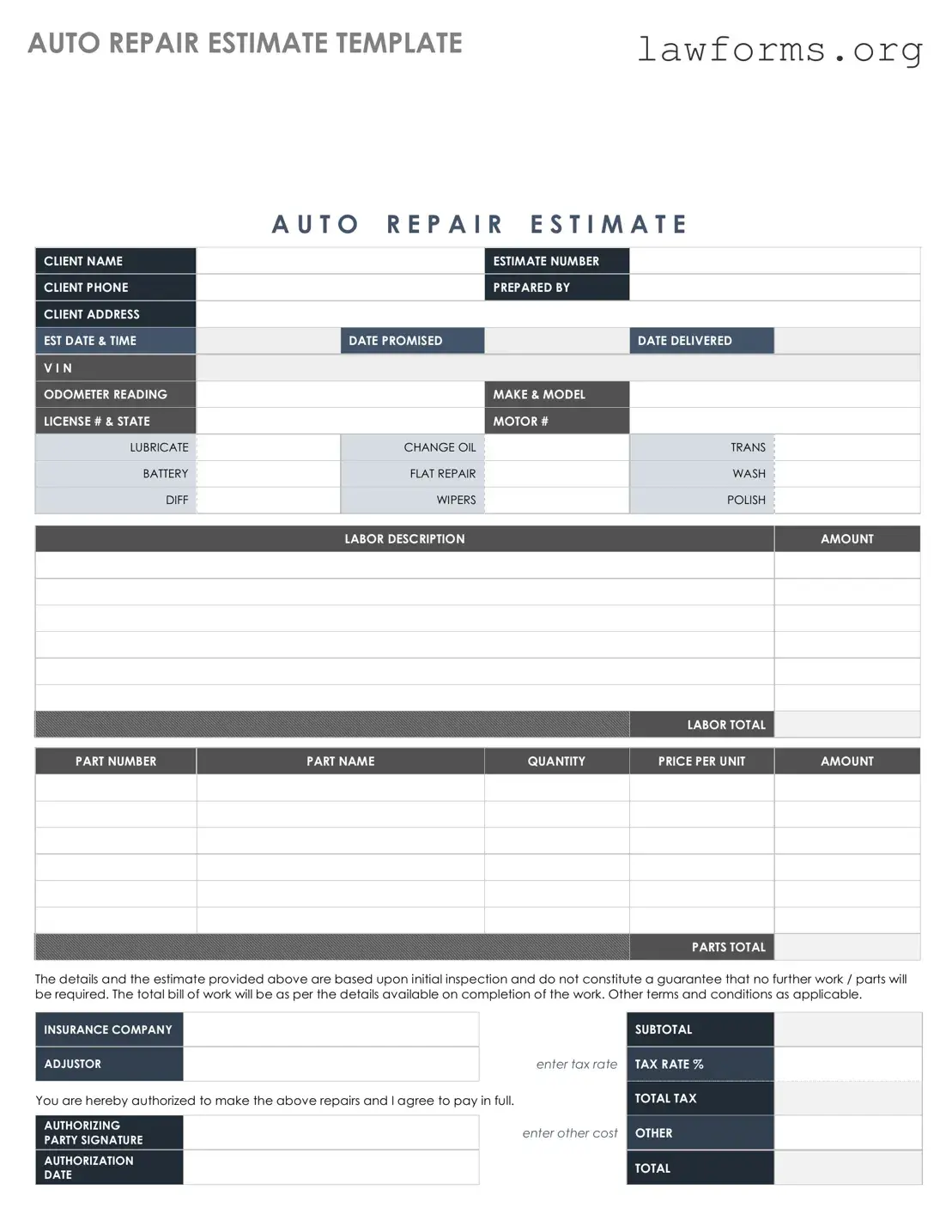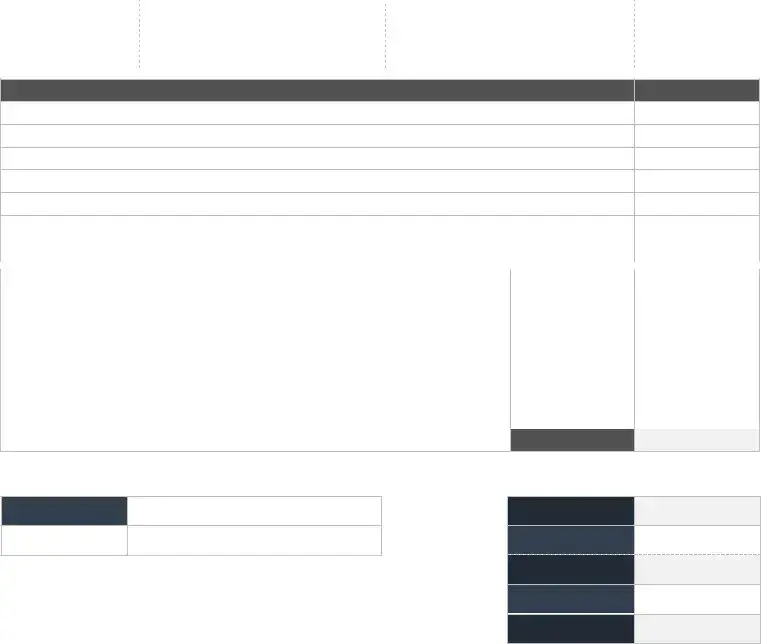Fill Out a Valid Auto Repair Estimate Template
An Auto Repair Estimate form is a document used by mechanics and auto repair shops to provide customers with a detailed breakdown of the expected costs for vehicle repairs. This form helps ensure transparency and allows car owners to understand the services being offered. Ready to get your estimate? Fill out the form by clicking the button below!
Customize Document Online

